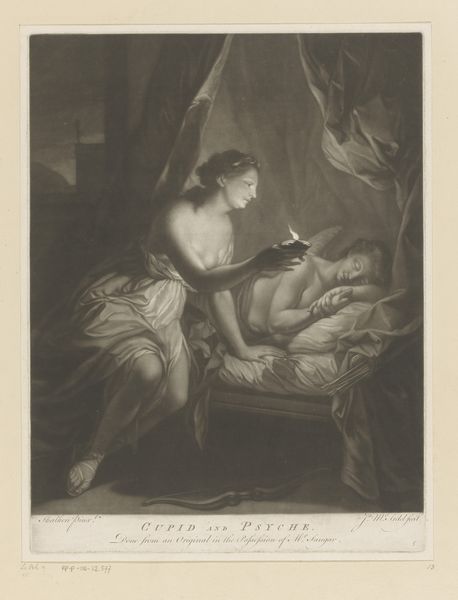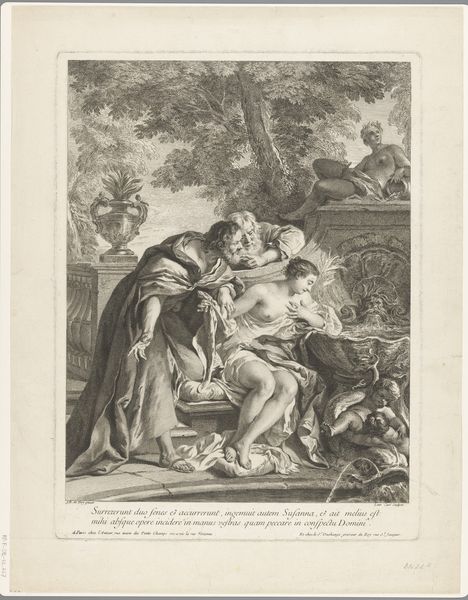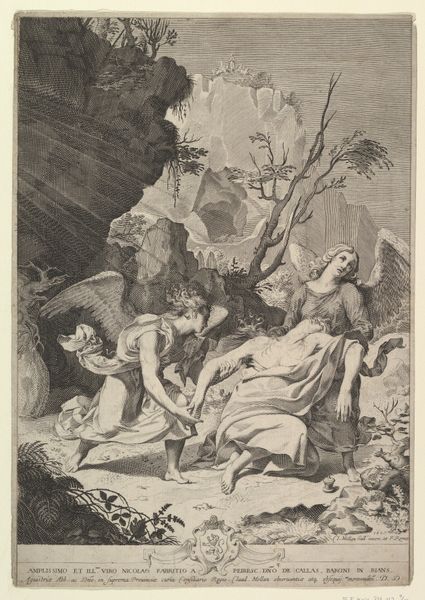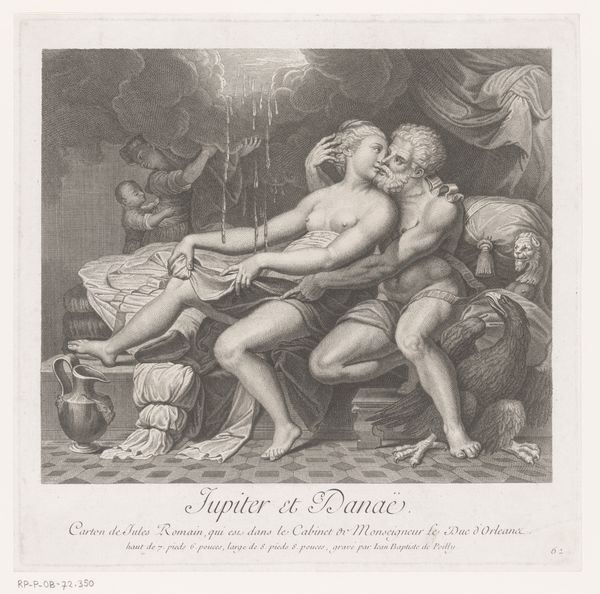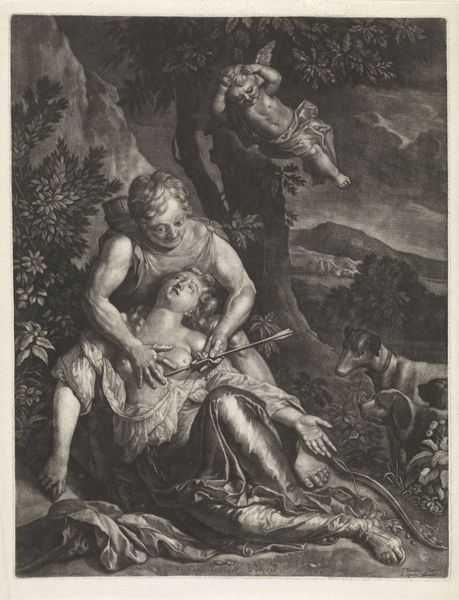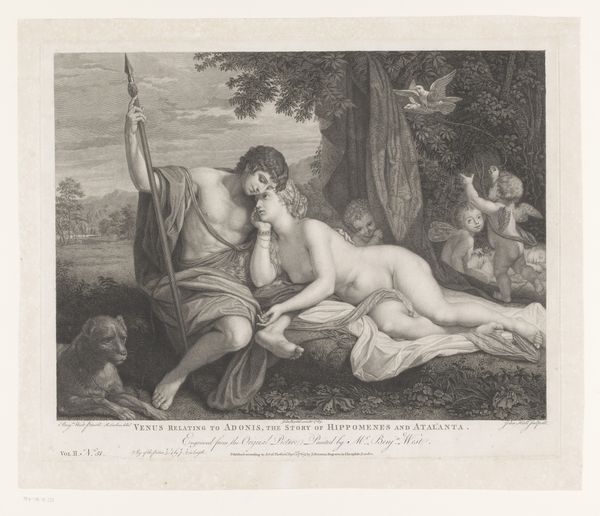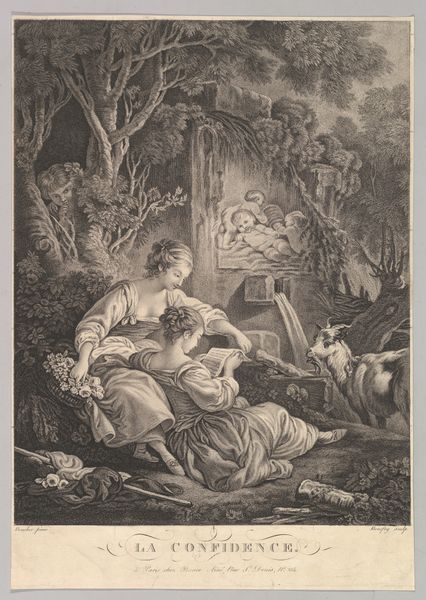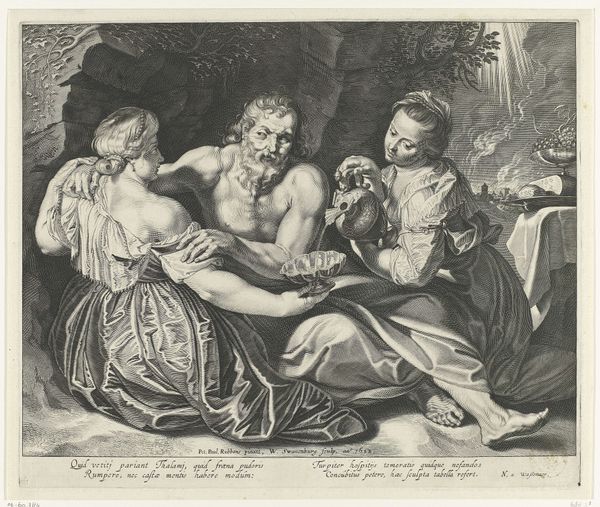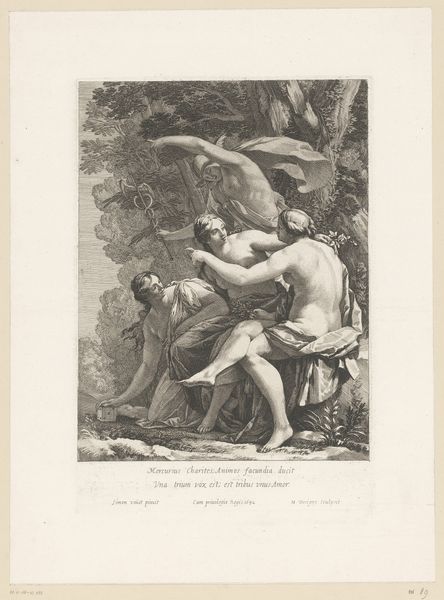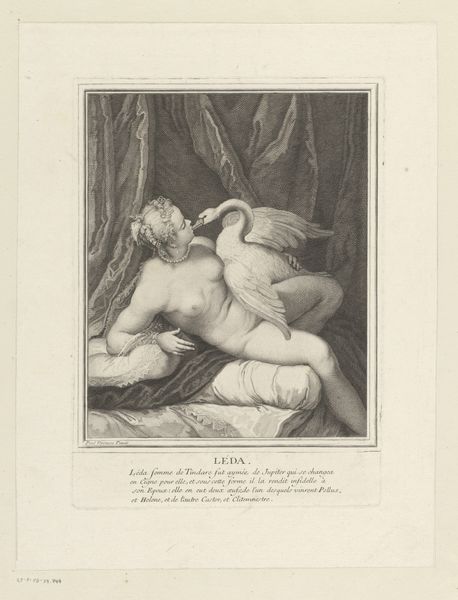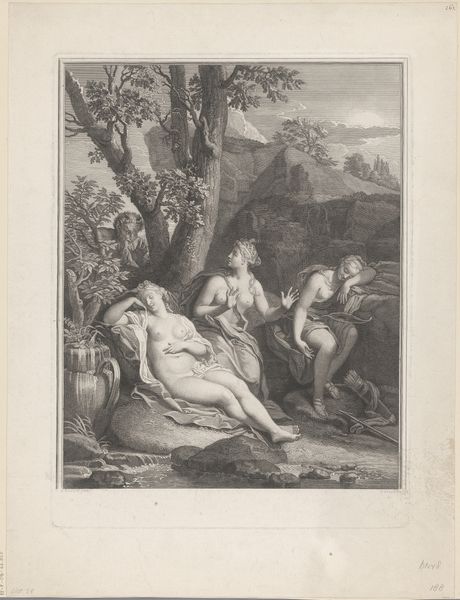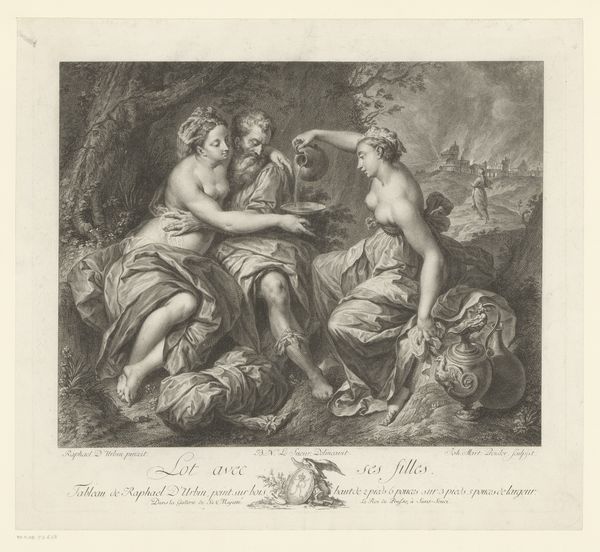
Dimensions: height 384 mm, width 284 mm
Copyright: Rijks Museum: Open Domain
Louis Desplaces made this print, Pyramus en Thisbe, sometime in the 18th century using a process called engraving. This is a printmaking technique in which lines are incised into a metal plate, which is then inked and used to make an impression on paper. The quality of the engraved lines gives the image its character. Desplaces uses hatching and cross-hatching to build up tone and shadow, creating a sense of depth and volume. It is a laborious process requiring a high degree of skill and precision. In this case, the technique is also crucial to how we understand the artwork, and the social context in which it was made. Printmaking, like engraving, allowed for the mass production and dissemination of images. The story depicted, of Pyramus and Thisbe, would have reached a much wider audience than just the aristocratic elite. Through printmaking, classical narratives and moral tales could be circulated, contributing to the shaping of public opinion and cultural values. So, in this engraving, the material and process are not just about aesthetics, but also about the democratization of art and knowledge.
Comments
No comments
Be the first to comment and join the conversation on the ultimate creative platform.
